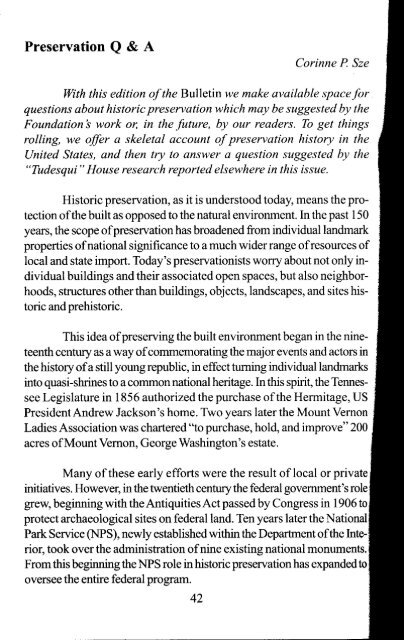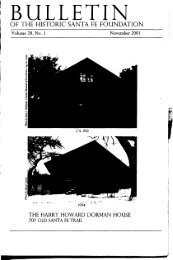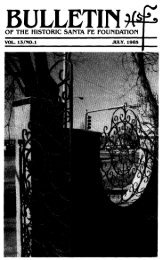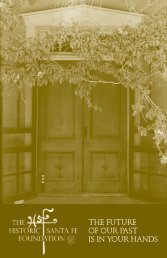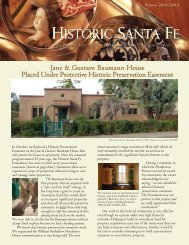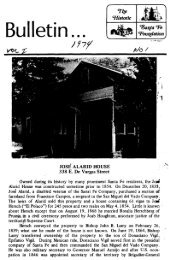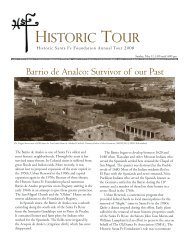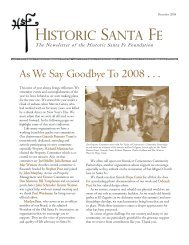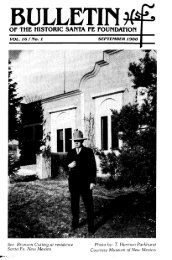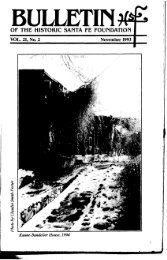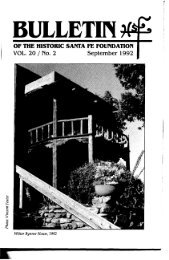Roque Tudesqui House - Historic Santa Fe Foundation
Roque Tudesqui House - Historic Santa Fe Foundation
Roque Tudesqui House - Historic Santa Fe Foundation
Create successful ePaper yourself
Turn your PDF publications into a flip-book with our unique Google optimized e-Paper software.
Preservation<br />
Q & A<br />
Corinne P Sze<br />
With this edition of the Bulletin we make available space for<br />
questions about historic preservation which may be suggested by the<br />
<strong>Foundation</strong> s work or, in the future, by our readers. To get things<br />
rolling, we offer a skeletal account of preservation history in the<br />
United States, and then try to answer a question suggested by the<br />
"<strong>Tudesqui</strong>" <strong>House</strong> research reported elsewhere in this issue.<br />
<strong>Historic</strong> preservation, as it is understood today, means the protection<br />
of the built as opposed to the natural environment. In the past 150<br />
years, the scope of preservation has broadened from individual landmark<br />
properties of national significance to a much wider range of resources of<br />
local and state import. Today's preservationists worry about not only individual<br />
buildings and their associated open spaces, but also neighborhoods,<br />
structures other than buildings, objects, landscapes, and sites historic<br />
and prehistoric.<br />
This idea of preserving the built environment began in the nineteenth<br />
century as a way of commemorating<br />
the major events and actors in<br />
the history of a still young republic, in effect turning individual landmarks<br />
into quasi-shrines to a common national heritage. In this spirit, the Tennessee<br />
Legislature in 1856 authorized the purchase ofthe Hermitage, US<br />
President Andrew Jackson's home. Two years later the Mount Vernon<br />
Ladies Association was chartered "to purchase, hold, and improve" 200<br />
acres of Mount Vernon, George Washington's<br />
estate.<br />
Many of these early efforts were the result oflocal or private<br />
initiatives. However, in the twentieth century the federal govemment's role<br />
grew, beginning with the Antiquities Act passed by Congress in 1906 to<br />
protect archaeological sites on federa11and. Ten years later the National<br />
Park Service (NPS), newly established within the Department ofthe Interior,<br />
took over the administration of nine existing national monuments.<br />
From this beginning the NPS role in historic preservation has expanded to<br />
oversee the entire federal program.<br />
42


